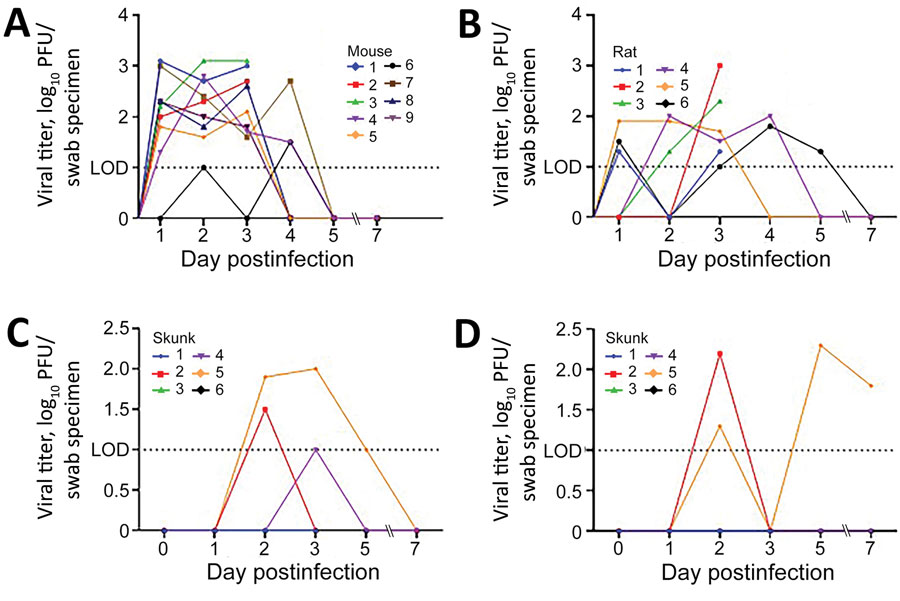Volume 27, Number 8—August 2021
Research
Peridomestic Mammal Susceptibility to Severe Acute Respiratory Syndrome Coronavirus 2 Infection
Figure

Figure. Oropharyngeal shedding of severe acute respiratory syndrome coronavirus 2 in deer mice (A), bushy-tailed woodrats (B), and striped skunks (C) and nasal shedding in striped skunks (D). LOD = 1 log10 PFU. LOD, limit of detection.
Page created: May 16, 2021
Page updated: July 18, 2021
Page reviewed: July 18, 2021
The conclusions, findings, and opinions expressed by authors contributing to this journal do not necessarily reflect the official position of the U.S. Department of Health and Human Services, the Public Health Service, the Centers for Disease Control and Prevention, or the authors' affiliated institutions. Use of trade names is for identification only and does not imply endorsement by any of the groups named above.